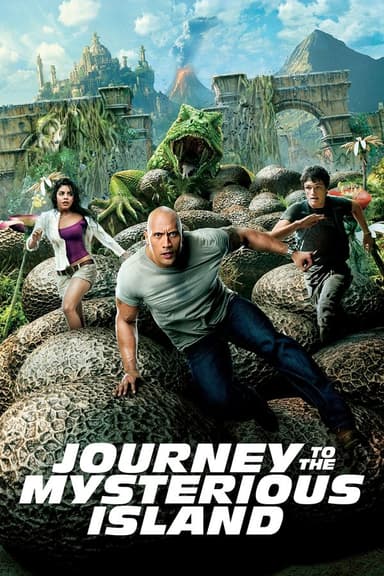
Journey to the Center of the Earth
1959 • Adventure, Family, Fantasy • G
An Edinburgh professor and assorted colleagues follow an explorer's trail down an extinct Icelandic volcano to the earth's center.
Runtime: 2h 12m
Why you should read the novel
Reading Jules Verne’s 'Journey to the Center of the Earth' offers a far richer and deeper experience than simply watching the 1959 film. The novel immerses you in Verne’s vision, filled with detailed scientific concepts and vivid descriptions that ignite the imagination. Through Professor Lidenbrock’s eyes, readers explore subterranean worlds, encounter prehistoric creatures, and witness feats of intellect and courage.
Verne’s prose allows for a more personal and intellectual journey, presenting challenges that test both the mind and the spirit. The characters’ development is gradual, nuanced, and far more compelling on the page, rewarding attentive readers with layers of discovery. The book also delivers a sense of awe and possibility, emphasizing curiosity and persistence.
By delving into the original novel, readers gain an appreciation for Verne’s pioneering influence on science fiction and adventure literature. The book also encourages deeper reflection on the limits of scientific knowledge and human ambition, something that extends well beyond the spectacle of cinematic adaptation.
Adaptation differences
One major difference between the 1959 film and the original novel lies in the characters. The movie introduces new characters, such as Alec McKuen and Carla Göteborg, who are not present in Jules Verne’s story. Moreover, the protagonist’s name in the novel is Professor Otto Lidenbrock, whereas the film anglicizes this to Sir Oliver Lindenbrook. These changes were likely made to appeal to contemporary audiences and permit romantic subplots absent in the book.
Plot-wise, the film simplifies and alters many events from the novel for visual effect and pacing. The subterranean journey in the book is marked by meticulous scientific reasoning and plausible, though speculative, geology. The film, conversely, emphasizes action and spectacle—adding sequences like cave-ins and introducing threats, such as antagonistic rival explorers, that are not present in the original.
The settings themselves are another significant divergence. While Verne’s environments are described with careful scientific accuracy and imaginative plausibility, the 1959 film brings them to life with colorful sets and special effects, often prioritizing drama over realism. The movie’s creatures, like the large reptiles, are portrayed using practical effects, whereas in the book, encounters with prehistoric animals are described in a more suspenseful and mysterious manner.
Finally, the tone and message differ between mediums. Verne’s novel explores the limits of scientific knowledge, the spirit of discovery, and the relationship between man and nature. These philosophical themes are often downplayed or overshadowed in the film by romance and action sequences. Consequently, the original novel provides a more authentic and intellectually satisfying adventure than the film adaptation.
Journey to the Center of the Earth inspired from
Journey to the Center of the Earth
by Jules Verne
















